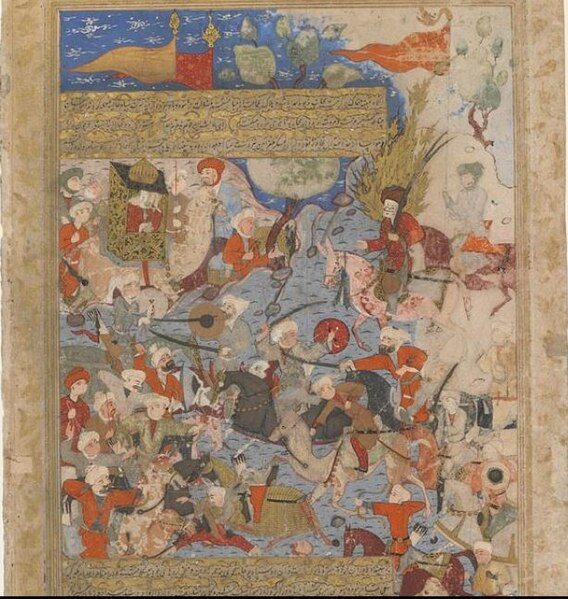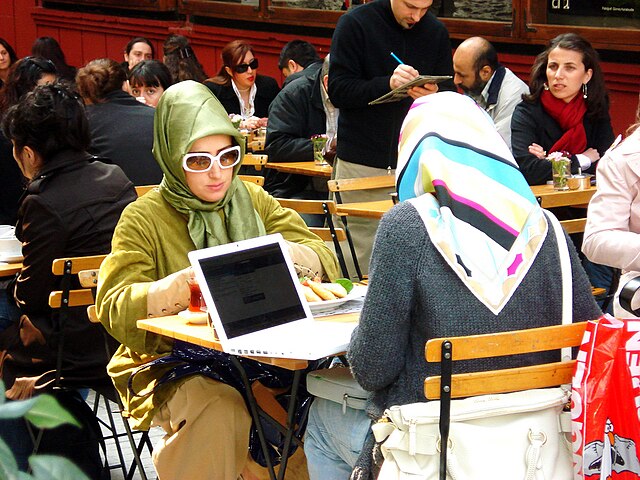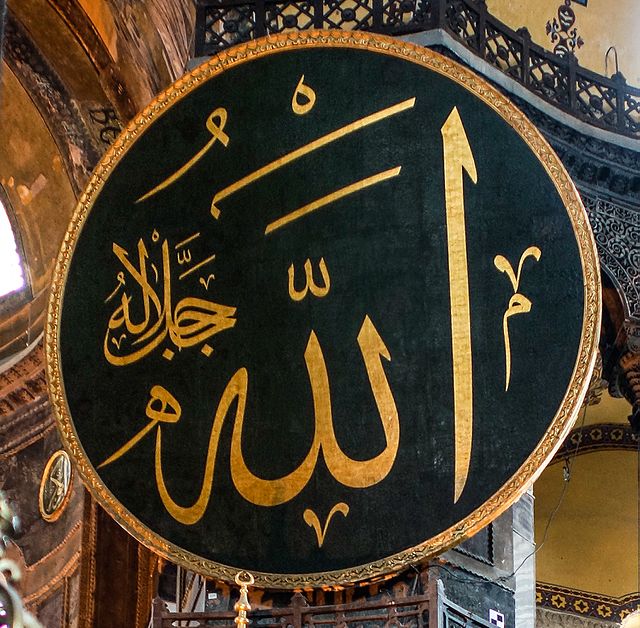The experiences of Muslim women vary widely between and within different societies. At the same time, their adherence to Islam is a shared factor that affects their lives to a varying degree and gives them a common identity that may serve to bridge the wide cultural, social, and economic differences between them.
Girl Reciting the Qurān (Kuran Okuyan Kız), an 1880 painting by the Ottoman polymath Osman Hamdi Bey, whose works often showed women engaged in educational activities.
A fifteenth-century Persian miniature depicting the Battle of the Camel, a decisive encounter between the troops of the fourth caliph 'Alī, and an opposing army rallied by Muḥammad's wife, Āʿisha. In the aftermath of Alī's victory, Āʿisha withdrew from politics. Traditionalists have used this episode to argue that women should not play an active political role, while modernists have held up Āʿisha's legacy in arguing for gender equity in the Islamic tradition.
Early costumes of Arab women.
Women in an Istanbul cafeteria
Islam is an Abrahamic monotheistic religion centered on the Quran and the teachings of Muhammad, the religion's founder. Adherents of Islam are called Muslims, who are estimated to number approximately 1.9 billion worldwide and are the world's second-largest religious population after Christians.
The Kaaba at Masjid al-Haram in Mecca, Saudi Arabia, the holiest Islamic site
Calligraphy showing the word Allah in Arabic in Hagia Sophia, Istanbul, Turkey
A 16th century Siyer-i Nebi image of the angel Gabriel visiting Muhammad
A Quran manuscript resting on a rehal, a book rest for the holy text








